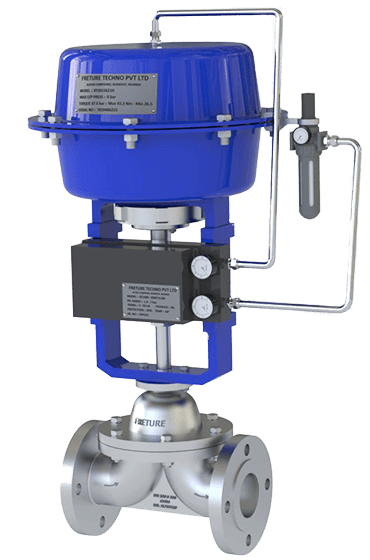Valves play a crucial role in fluid control across various industries, ensuring the smooth regulation of liquids and gases. Among the most commonly used valve types are diaphragm valves and butterfly valves, both of which serve distinct purposes based on their design and function. Understanding their key differences and applications can help industries select the right valve for their specific needs.
What is a Diaphragm Valve?
A diaphragm valve is a type of valve that uses a flexible diaphragm to regulate fluid flow. The diaphragm is typically made of elastomeric or synthetic materials such as PTFE or EPDM, which provide chemical resistance and durability. This valve operates by pressing the diaphragm against the valve seat to stop flow or lifting it to allow fluid passage.
Key Features of Diaphragm Valves
Leak-proof design: Provides a tight seal, reducing leakage risks.
Hygienic and sterile operation: Commonly used in industries requiring contamination-free processes, such as pharmaceuticals and food processing.
Corrosion resistance: Suitable for handling aggressive chemicals and slurries.
Precise flow control: Works well for throttling applications.
What is a Butterfly Valve?
A butterfly valve is a rotary valve that uses a circular disc mounted on a rotating shaft to control fluid flow. When the disc is turned parallel to the flow, the valve opens, and when turned perpendicular, it closes. The quarter-turn mechanism allows for quick and efficient flow regulation.
Key Features of Butterfly Valves
Compact and lightweight: Takes up less space compared to other valve types.
Quick operation: Requires only a 90-degree turn to fully open or close.
Cost-effective: Economical solution for large-diameter flow control.
Suitable for high-flow applications: Used in water treatment, HVAC systems, and industrial pipelines.
Key Differences Between Diaphragm and Butterfly Valves
| Feature | Diaphragm Valve | Butterfly Valve |
|---|---|---|
| Design | Uses a flexible diaphragm to control flow | Uses a rotating disc to regulate flow |
| Operation | Linear motion (up/down) | Rotary motion (quarter-turn) |
| Sealing Performance | Provides a tight, leak-proof seal | Moderate sealing capability, may require additional gaskets |
| Application Suitability | Ideal for sterile, corrosive, and precise flow control | Best for large-diameter, high-flow applications |
| Maintenance | Requires diaphragm replacement over time | Low maintenance, simple disc replacement |
| Flow Control | Precise throttling capability | Best suited for on/off control with limited throttling |
Where are These Valves Used?
Both diaphragm and butterfly valves are widely used across industries, but their applications differ based on fluid type, pressure requirements, and flow control needs.
Common Applications of Diaphragm Valves
Pharmaceutical and Biotechnology: Used for sterile fluid handling in cleanroom environments.
Food and Beverage: Ensures hygienic fluid transfer in dairy, brewing, and beverage processing.
Chemical Processing: Handles aggressive chemicals and slurries with high corrosion resistance.
Water Treatment: Regulates chemical dosing and filtration systems.
Common Applications of Butterfly Valves
Water and Wastewater Treatment: Controls water distribution and sewage systems efficiently.
HVAC Systems: Regulates air and water flow in heating, ventilation, and cooling systems.
Power Plants: Used in steam and cooling water applications.
Oil and Gas Industry: Controls fuel flow in pipelines and storage facilities.
Choosing the Right Valve for Your Needs
When selecting between a diaphragm valve and a butterfly valve, consider the following factors:
Fluid Type: Diaphragm valves are ideal for corrosive and sterile applications, while butterfly valves work best for water, air, and non-corrosive fluids.
Pressure Requirements: If a leak-tight seal is critical, a diaphragm valve is the better option. If quick shut-off and large flow capacity are needed, a butterfly valve is more efficient.
Industry Standards: Certain industries, such as pharmaceuticals and food processing, require diaphragm valves to meet strict hygiene regulations.
Conclusion
Both diaphragm valves and butterfly valves serve vital roles in fluid management, each offering unique advantages. Diaphragm valves excel in precision control, chemical resistance, and sanitary applications, whereas butterfly valves are favored for cost-effective, high-flow operations. By understanding their differences and applications, industries can make informed decisions to optimize their fluid handling systems.

No comments:
Post a Comment